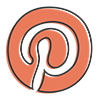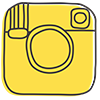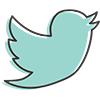If I Was A Banana: building empathy through imagination—of all the bananas, which one would you be?
/Teaching children to empathise might be the greatest of all parenting and teaching challenges—so very much else hinges upon it. And the level of difficulty only increases because, unlike shoe tying or bed making, parents and educators are inevitably still developing that skill themselves.
Atticus Finch famously said:
“You never really understand a person until you consider things from his point of view, until you climb into his skin and walk around in it.”
JK Rowling took the idea a step further, in an important direction. She said:
“In its arguably most transformative and revelatory capacity, [imagination] is the power that enables us to empathize with humans whose experiences we have never shared.”
Imagination is a prerequisite for empathy—in order to walk around in someone else’s skin, you really do need to be able to imagine his or her life, with its joys and sorrows, triumphs and worries. And then you need to be able to imagine yourself in that life. Picture books are a tremendous support for this type of imaging, inviting readers into new worlds, imaginary or real.
If I Was a Banana is wonderful for both supporting imagination and building empathy—that’s an impressive combination in a picture book that’s also a delight to read!
Here, a young boy muses on which sort of banana, or mountain, cow, cloud and so on he would be. He has a thoughtful voice, one that weighs and considers, without verbosity.
His reasoning is varied—sometimes he thinks about the effect on others:
“If I was a mountain I would be the one with the snow and the clouds and the rumbling volcano that never blows its top (well, never enough to hurt anyone).”
Sometimes, he is wistful:
“If I was a cloud it would be great to be a big black storm cloud and shoot lightning, thunder, and hail all over the place. But then, maybe a much smaller, lighter, fluffy sort of cloud would be a better sort of cloud to be.”
Sometimes he’s decisive:
“If I was a tree I would be quite happy.”
Finally he thinks on being a boy and concludes that he is most comfortable being himself.
Some reasons to love this book:
It encourages readers to think about themselves living a vastly and impossibly different life, affirming the possibility of choosing the life you will live. We really can’t choose to be a banana, or an elephant, but we can be who we want to be. (The final page’s confirmation that the boy is happy with who he is now is vital—it says that there's safety in imaging other lives, all the while knowing that you can be happy where you are.)
The thoughtfulness of each of the boy’s ideas means that there is time to think privately about his choices—perhaps you’d prefer to be the unripe banana with more shelf time left!
The pictures carry the reader through the boy’s thoughts— there are multiple pictures for each idea and they show the genesis of the boy’s ideas + the progression of his choices. As well as being truly lovely to look at, they're really good for early readers who can see more than is read aloud to them.
It affirms the value of imagination—the boy’s internal world is key to his understanding of the world around him. As he thinks through each of his ideas, he shares the knowledge he already has, which shows the value of knowledge applied to imagination.
It’s a beautifully produced book—the matt pages perfectly off set the pictures and I found myself running my hands over the pages for a tactile connection with words and pictures.
A small reading hint:
It's nice to read this book through once or twice as a whole, to enjoy the wistful feel and to let the notion of choosing a life sink in. Then, after some time for private thought, it's good to stop reading and talk about what sort of banana, or mountain, or bird etc you’d be.
To continue building empathy, for older children at least, you could try thought-prompts like:
If I was a refugee, I would be … or
If I was a President, I would be… or
If was a farmer, I would be …
Another quick idea:
The illustrator, Kieran Rynhart held an art workshop in a New Zealand Children’s Library recently, where he offered “If I was … I would be…” as a prompt. The children produced thoughtful and beautiful art; after a reading or two, it could be fun to see what your child comes up with.
I’ve tagged If I Was a Banana for ages 2 – 12 because it has the sort of hazy illustrations that are like a gentle cushion for developed eyes, but can be tricky for very new eyes to focus on. But I think it would make a beautiful baby shower gift—it holds so much promise of the imaginary, thought provoking world to come.
IF I WAS A BANANA
by Alexandra Tylee, illustrated by Kieran Rynhart – Gecko Press, 2016
ages 2 to 12 years / emotional resilience, heartwarmers, imagination
Amazon - Book Depository
Book Depository has free postage anywhere in the world and great pricing, but North American readers may prefer Amazon.






